Juan Cales spoke at the public hearing in January about the F&G propoal to expand its waste transfer operation in the South End of Waterbury. When Cales began addressing the P&Z commission in Spanish, alderman Brenda Cotto joined him at the podium and translated. Cales emotionally implored the commission to think about the well being of the seniors and children who will be impacted by the F&G project long after the investment is made. What the exact impact would be is debatable, and at the center of whether F&G’s project moves forward.
Story and Photographs By John Murray
A proposal to expand a garbage transfer station in the South End of Waterbury has stirred a hornet’s nest of opposition, and prompted Mayor Neil O’Leary to weigh in on the project.
“Wrong place, wrong time, and wrong message to send to the residents in the South End of the city,” O’Leary told the The Waterbury Observer. “We are working hard to improve the quality of life in the South End, and municipal waste is not part of that vision.”
F&G has been processing industrial debris, construction material and waste on Railroad Hill Street for years, and is now seeking to expand its operation seven-fold. The company currently processes 100 tons of waste a day, and is seeking a zoning permit to haul 700 tons a day.
If approved, that would mean more trucks and more odors in the South End of the city.
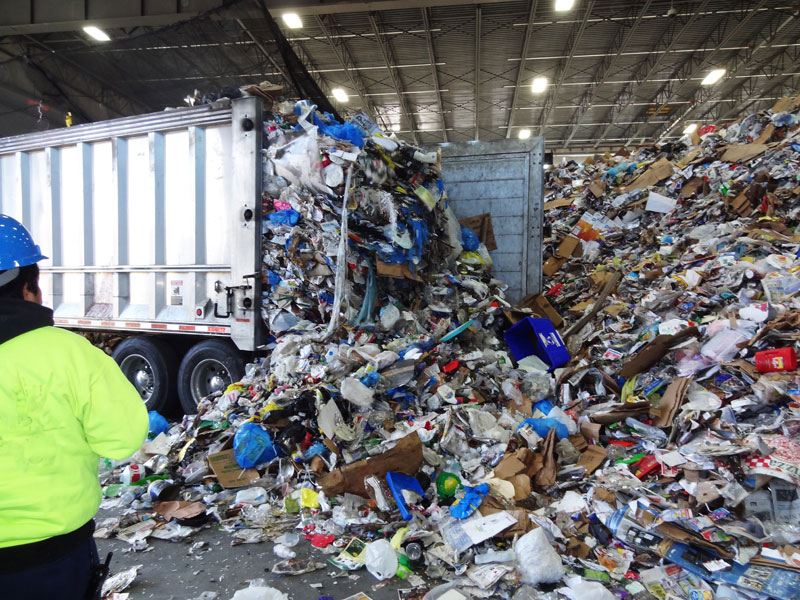
The tipfloor of a municipal waste transfer station from Google images.
During a public hearing in January the project met strong resistance from neighborhood residents, environmental champions, and state and local officials.
Steve Schrag asked who would monitor the trucks, and who would keep the trucks out of the neighborhoods? Schrag is the chairman of the Environmental Control Commission and has publicly stated that the F&G operation is a combination of seven different limited liability corporations. “Where does the buck stop if there is a problem,” Schrag asked. “Who do we hold accountable?”
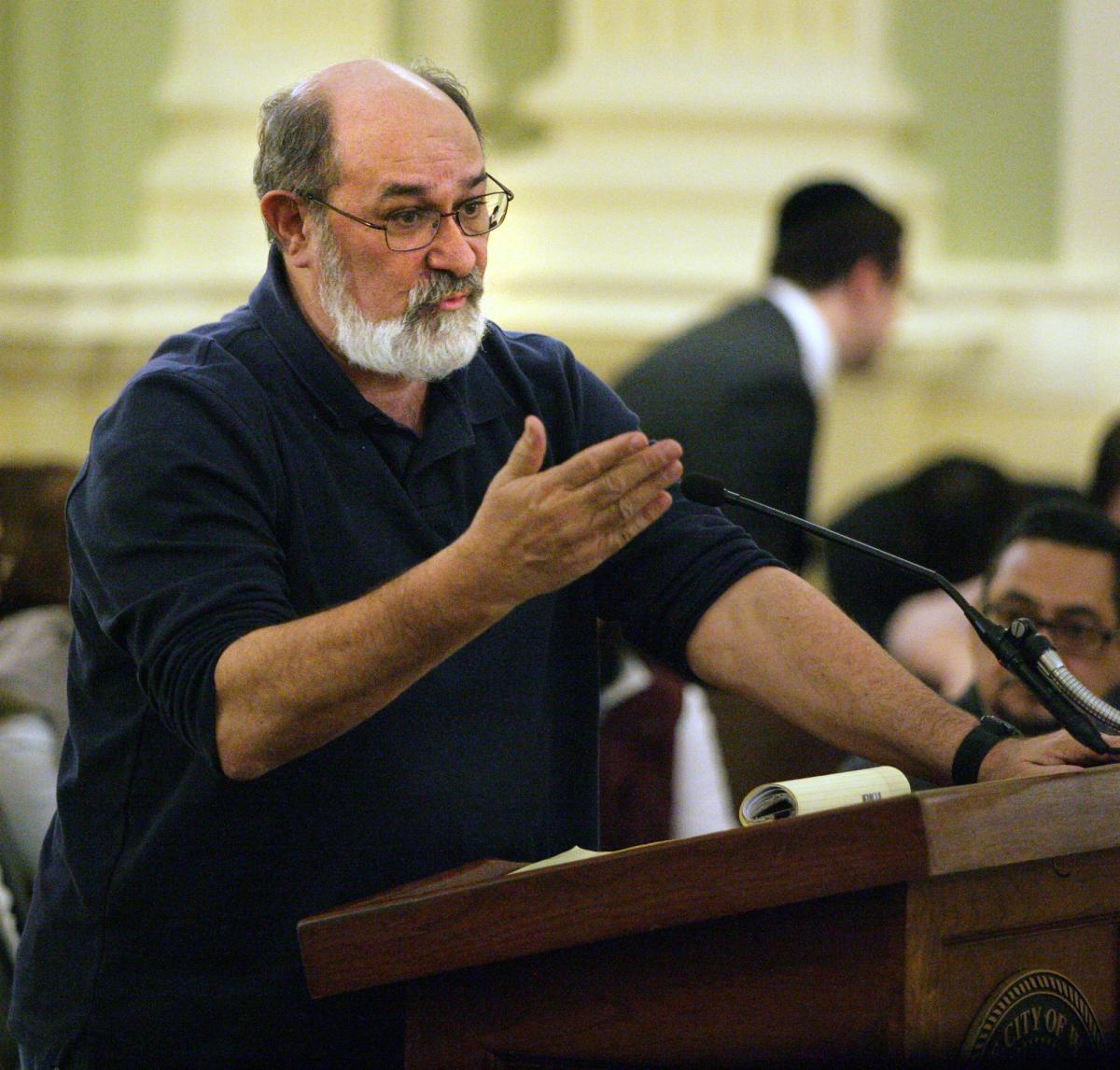
Steve Schrag lives in the Gilmartin neighborhood in the South End and is opposed to the project.
Larry De Pillo warned that construction projects on I-84 and Route 8 would push the trucks into the neighborhoods. “We don’t need to be known as someone else’s garbage pail,” he said.
State Representative Geraldo Reyes Jr. said the South End already experiences negative quality of life issues from F&G’s current operation, and the residents he represents in the 75th District (Downtown and the South End) oppose the expansion.
“There are already issues with the trucks coming and going from the facility and the South End has to deal with stink from garbage,” Reyes said. “Enough is enough. We don’t want this in the South End. This proposal doesn’t pass the smell test, literally.”
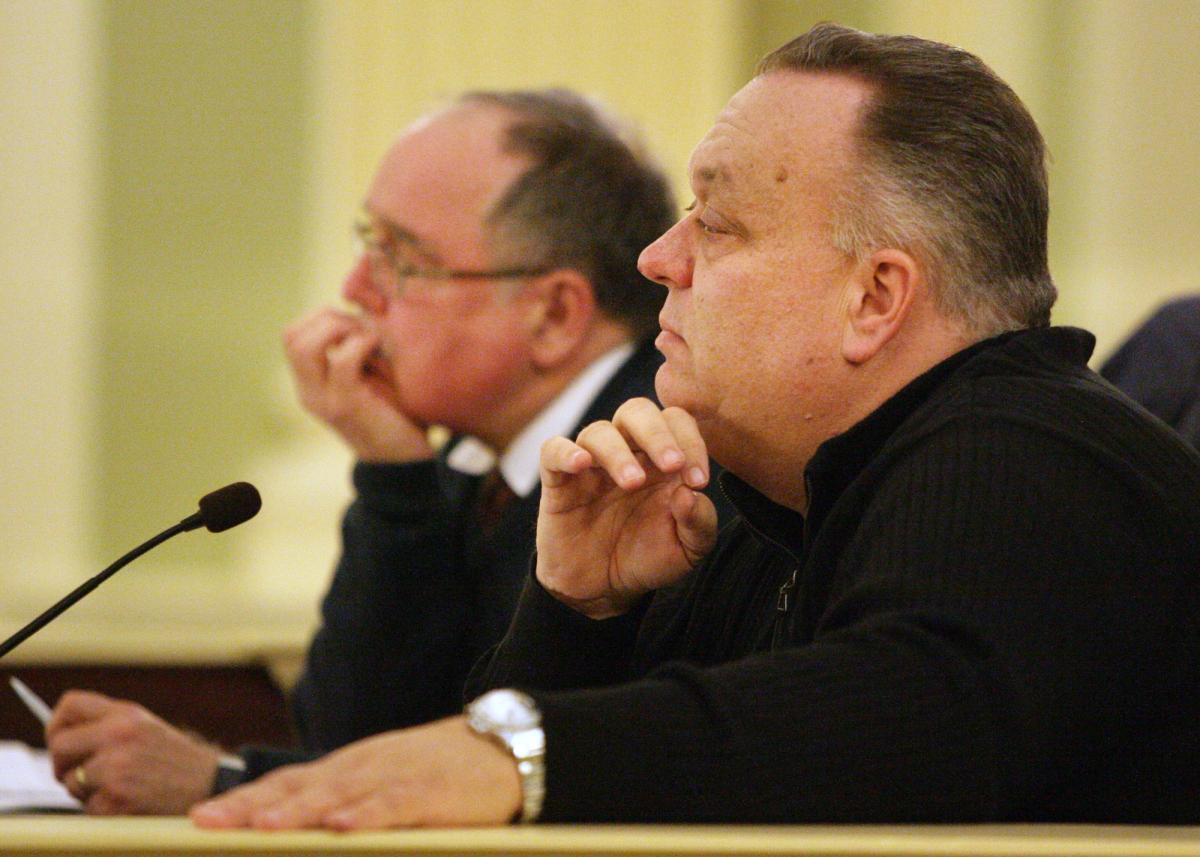
Zoning chairman John Egan, right, listened intently during the public hearing.
Art Denze lives in the Town Plot neighborhood and said the city has a long history of problems with companies dealing with waste and pollution. “We had EWR and Phoenix Soil and I don’t want Waterbury to be known as the toilet bowl of Connecticut,” he said, “We have a high rate of asthma and cancer in this city, and although we need new business in Waterbury, we need clean businesses that will do no harm to the neighborhoods.”
Joe Knapik said, “all the kids in Waterbury call us “Dirty Water”, and now this business expansion is about garbage. This doesn’t send the right message. It doesn’t make sense to send more garbage to the Dirty Water.”
F&G representatives have attempted to address community concerns and met with members of the Waterbury Neighborhood Council on February 1st inside Waterbury City Hall to answer questions. At that meeting Attorney Michael Tansley, representing F&G, said the “odor and traffic issues were very manageable and there would be no impediment to neighborhoods and city roads.”

Attorney Michael Tansley held up a city map to pinpoint where the F&G facility is located.
Tansley said the project could generate five to ten new jobs and would result in increased tax revenue, and cost savings for Waterbury.
F&G was asked by the city to pay for an odor study on the project and Tansley said the study concluded that the odor would only be detectible a “couple times a year.”
The odor study was prepared by TRC of Windsor, CT, and a draft report concluded that if F&G implemented ten addition steps to its plan that the facility “would not be expected to create an odor nuisance, except possibly in unusual circumstances.”
One of the ten steps was to evaluate the practicality of “diverting odorous waste loads to facilities with less sensitive surroundings during adverse weather conditions (hot weather).”
Mayor O’Leary said he knows and respects representatives at F&G, but he’s not buying the argument that the odor will only be an issue at certain times of certain days.
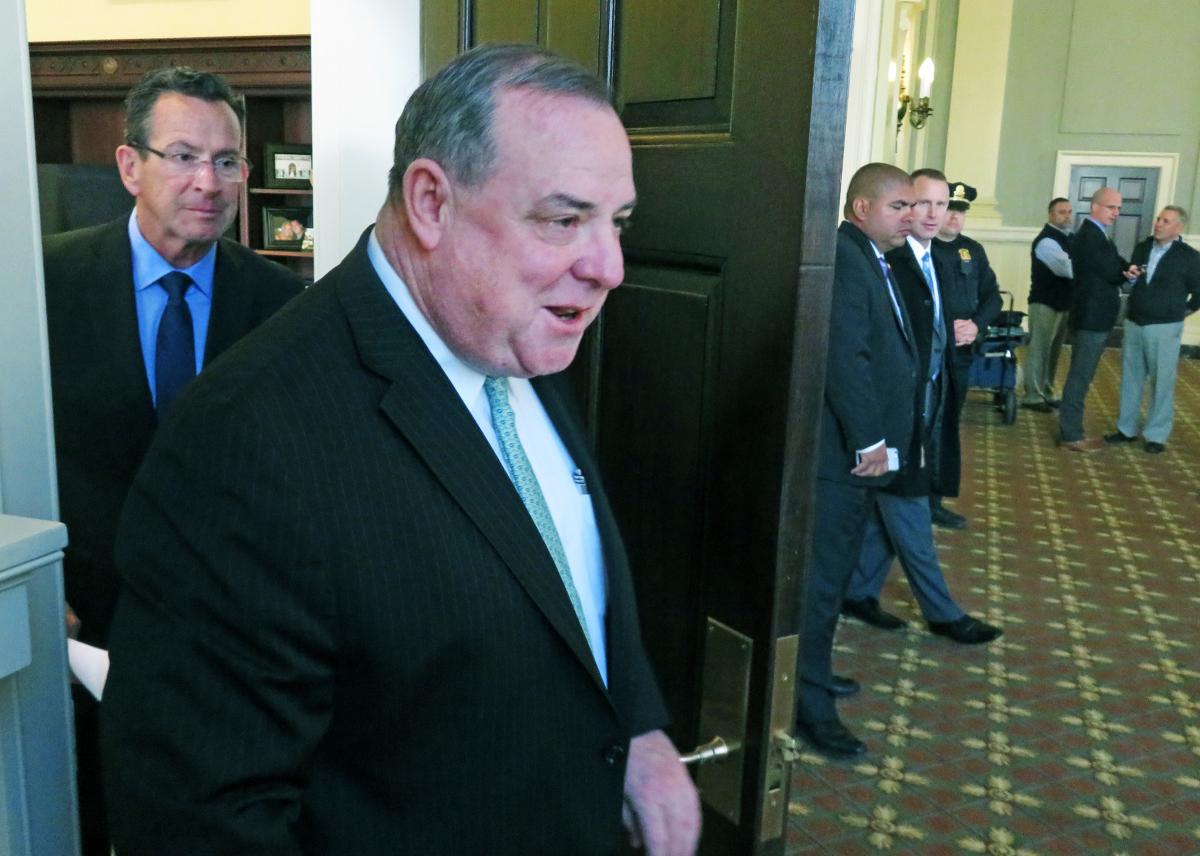
Waterbury Mayor Neil O’Leary held no punches; he is against the F&G proposal.
“What if that certain day is July 4th or Memorial Day?” O’Leary asked. “Any day is unacceptable in an area that already has issues with odors from the waste water treatment plant. More odor in the South End is not fair, and it is not right. Any odor is too much.”
F&G lawyer Edward Spinella said his family has lived in Waterbury for four generations and F&G has operated in Waterbury for 20 years without a complaint.
When asked if F&G had considered other towns for an expanded facility, Spinella said, “no.”

Attorney Spinella of F&G fielded questions at a meeting with the waterbury Neighborhood Council.
“Waterbury is strategically located and we believe this is an ideal project in an industrial zone,” he said. “We picked Waterbury because we are here.”
State Rep. Reyes said that the neighborhoods in the South End don’t know exactly where the odors come from, “they just know there are times when the South End stinks.”
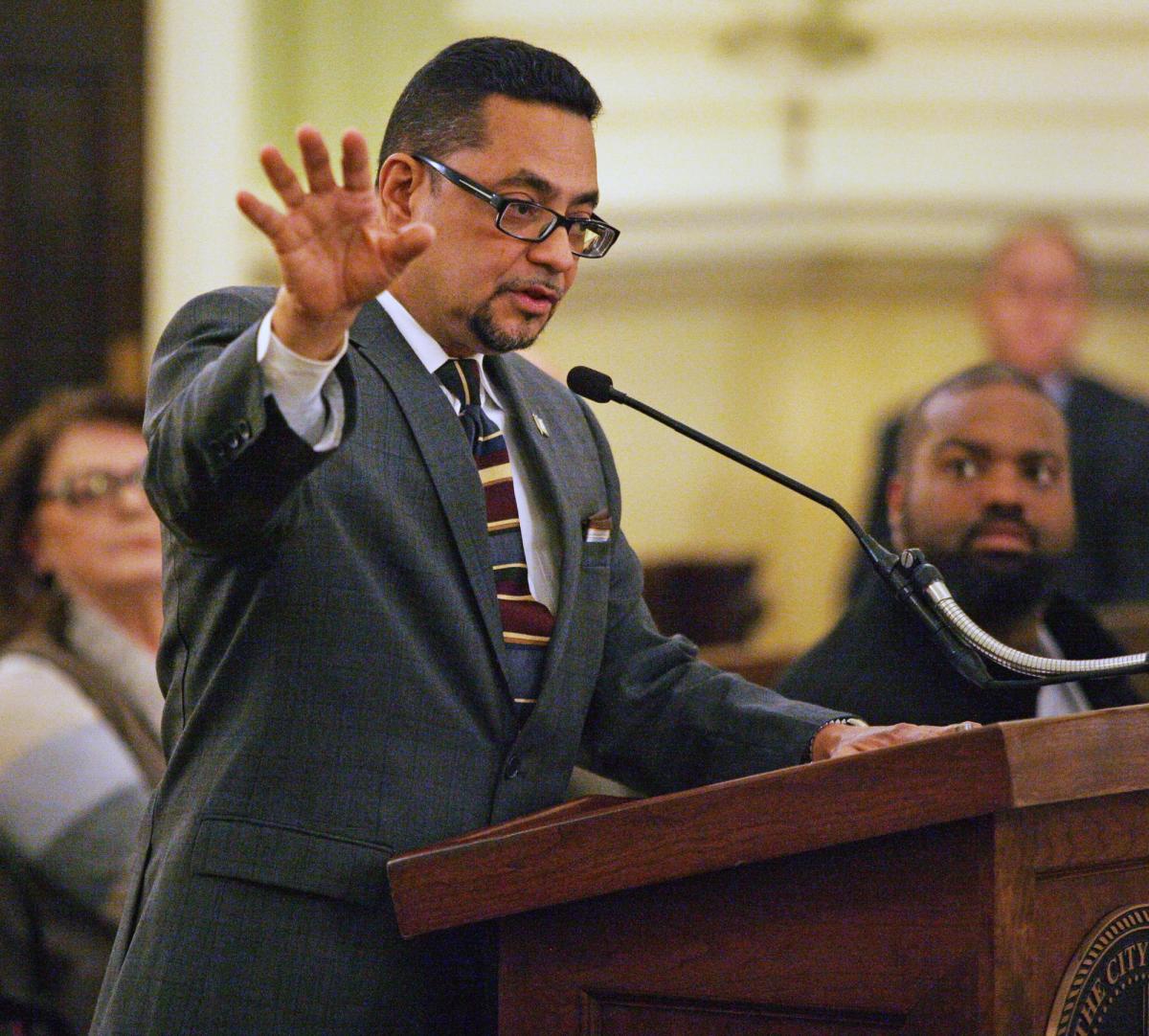
State Rep. Geraldo Reyes is leading residents of the South End in opposition of the garbage plant.
Atty. Spinella acknowledged that odor is a concern in the project and assured members of the neighborhood council that. “F&G was going as far as we can so that you people will not have odor. This is a huge investment for us, and we want to do this right.”
Bettejane Wesson, who lives in the Overlook neighborhood, spoke at the public hearing and said, “The South End has been Waterbury’s Cinderella for a while. They don’t need this.”
Wesson said the city’s history has been stained by belching smoke stacks, and a multi-colored Naugatuck River, and that with good things starting to happen in the South End of Waterbury, she prays this project does not come to pass.
Waterbury’s two Democrat aldermen in the 5th District, Sandra Martinez-McCarthy, and Brenda Cotto, both asked the P&Z board to deny the project. They sited several major projects in the South End, including Loyola housing and a multi-million dollar food hub, as reasons to keep the garbage away.
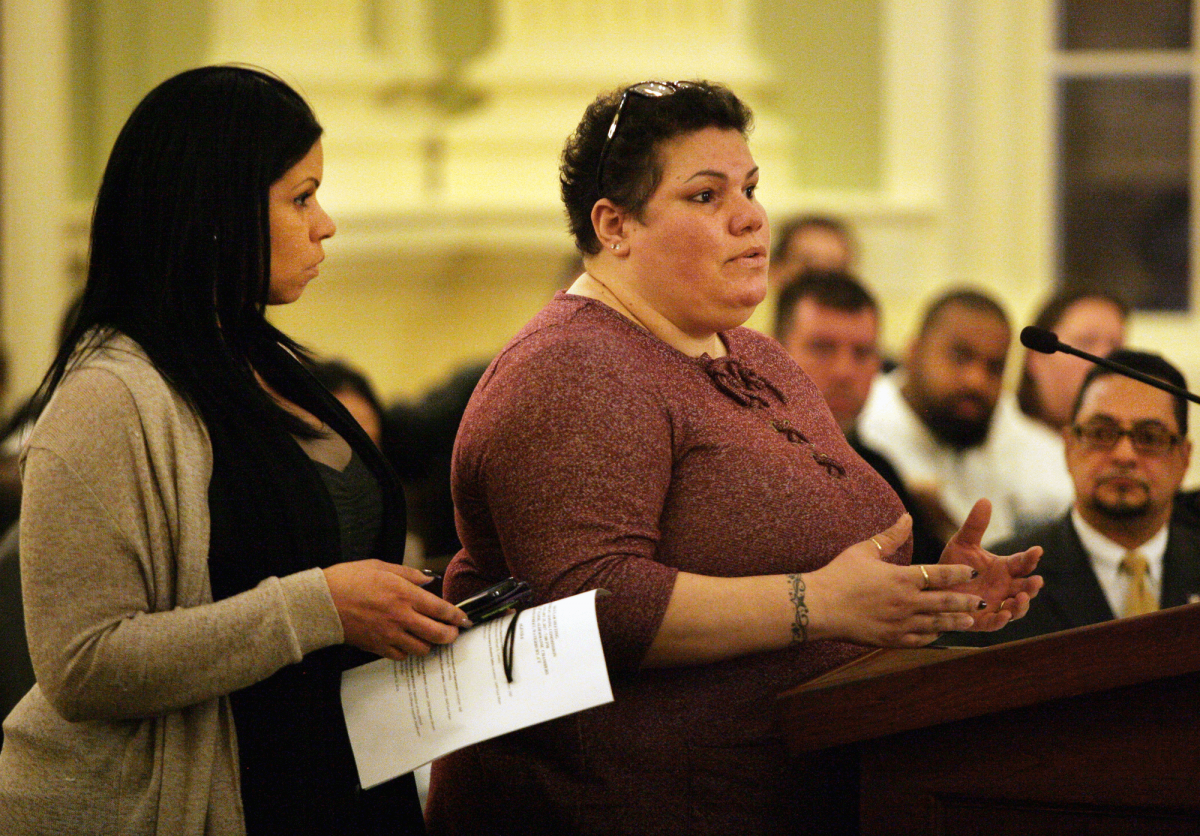
Exhibiting the power of Aldermen by District, two aldermen in the South End, Brenda Cotto, left, and Sandra Martinez-McCarthy are publicly opposed to the F&G project and are speaking out against it.
The other aldermen representing the 5th District, Republican Roger Sherman, is waiting to see the results of a city-mandated study to make up his mind about the project. Sherman said if the study shows no negative impact to the residents he would support F&G’s expansion effort.
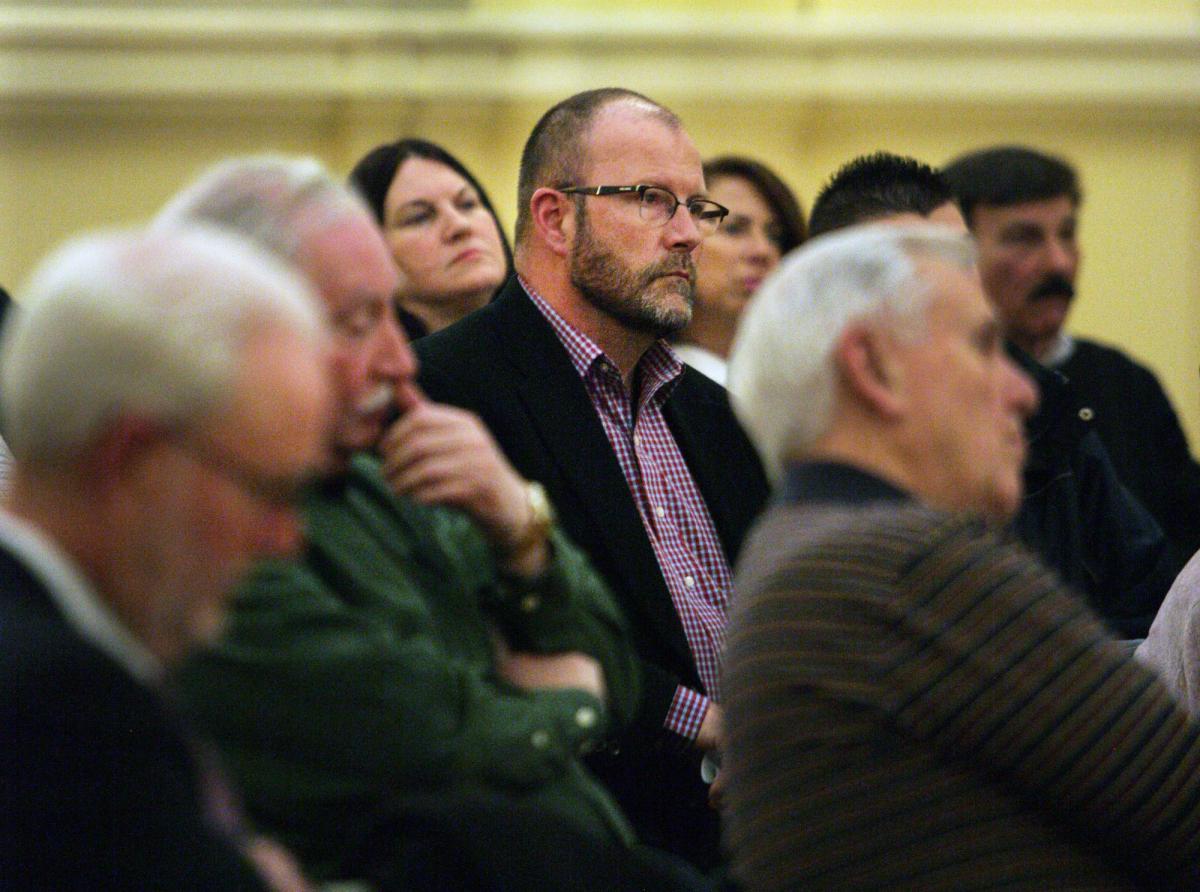
Roger Sherman, center, is the third alderman in the 5th District and is holding back his decision to support or oppose the F&G project until he gathers more data from studies.
F&G’s long-term goal is to try and win the city’s solid waste contract that will go out to bid in 2018. Waterbury’s garbage now is transported out of the city to be processed, and if F&G wins the contract, Waterbury could save money by having its food waste processed in the South End. Atty Spinella having a waste processing center in Waterbury would save the city at least $135,000 a year in fuel costs. Cost savings has caught Alderman Sherman’s attention.
“The prospect of lower fuel costs, a tremendous drop in wear and tear on City vehicles, and the possibility of a decreased cost of processing our municipal solid waste could help lessen the tax burden on city residents,” Sherman said. “I think it would be a good idea to tour the facility so that people can get a better idea of how things are processed.”
State Representative Larry Butler of the 72nd District has been an outspoken opponent of the project. “Garbage will attract rats,” Butler said at the public hearing. “People are worried about the unintended consequences of this project, and the people of Waterbury are tired of having to endure this type of business.”
The company plans to bring the trucks into Waterbury from Route 8 using exit 29 at the southern tip of the city. The trucks would head north on South Main Street, cross the Naugatuck River on the Eagle Street bridge, and then take a quick left onto Railroad Hill Street and into their facility. Company officials said the trucks would enter and exit Waterbury the same way.
Residents and city officials have repeatedly asked the company who would monitor truck activity in the city, and the answer is; F&G would.
“We control the drivers,” Atty Tansley said. “If the drivers don’t follow the route we tell them, they won’t work for us.”
The promise of “trust us” rings hollow to Mayor O’Leary. “Excuse me, but that’s the biggest line of bull,” he said. “These are independent drivers and I suspect they are not going to sit in huge traffic jams on the Mixmaster. I believe they will get off the highway and cut through the neighborhoods.”
O’Leary said he is sympathetic to F&G, but the proposal is not a good fit in a re-emerging and historically neglected neighborhood.
And while F&G believes the truck route in and out of the plant will have little to no impact on quality of life in the neighborhoods, they have failed to address the impact on the $7 million dollar Naugatuck River Greenway project that begins construction this Spring. The greenway will run next to South Main Street from Platts Mill Road to the Eagle Street Bridge, and residents enjoying the river walk will contend with the rumble of 140 garbage trucks coming and going from the F&G facility.
Community activist, Kevin Zak, is the executive director of the Naugatuck River Revival Group, and a member of the Naugatuck River Greenway Committee. When contacted, Zak didn’t mince words. “You can’t have 140 garbage trucks driving back and forth right next to the greenway,” he said. “It will kill the quality of life experience for users of the greenway.”

Naugatuck River advocate Kevin Zak believes garbage trucks along South Main Street will have a devastating impact on the proposed Naugatuck River Greenway.
Zak said F&G failed to factor in the “economic externality” of the project, which is a consequence of an economic activity experienced by an unrelated third party. Externality can be either positive or negative to a project. In this case F&G’s project would have a negative impact on the greenway project.
“They don’t see houses along that stretch of South Main Street so they’ve concluded the trucks will not have a negative impact,” Zak said. “That’s convenient for them, but they didn’t put all the factors in the equation, and that’s why we keep getting in trouble down the road. This will kill the greenway, and nobody is even talking about that.”
There will be further presentations by F&G at the next Planning & Zoning meeting on February 16th inside Waterbury City Hall at 7 pm, and the public is encouraged to come out and express either support or opposition for the project. After presentations and comments, the commission will vote on the project.

